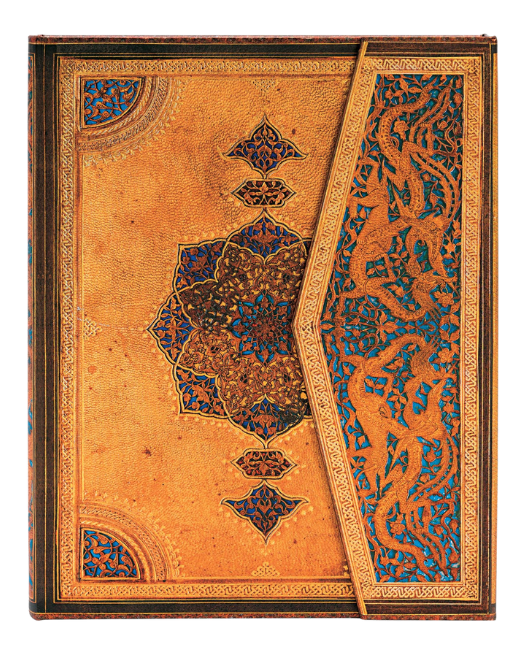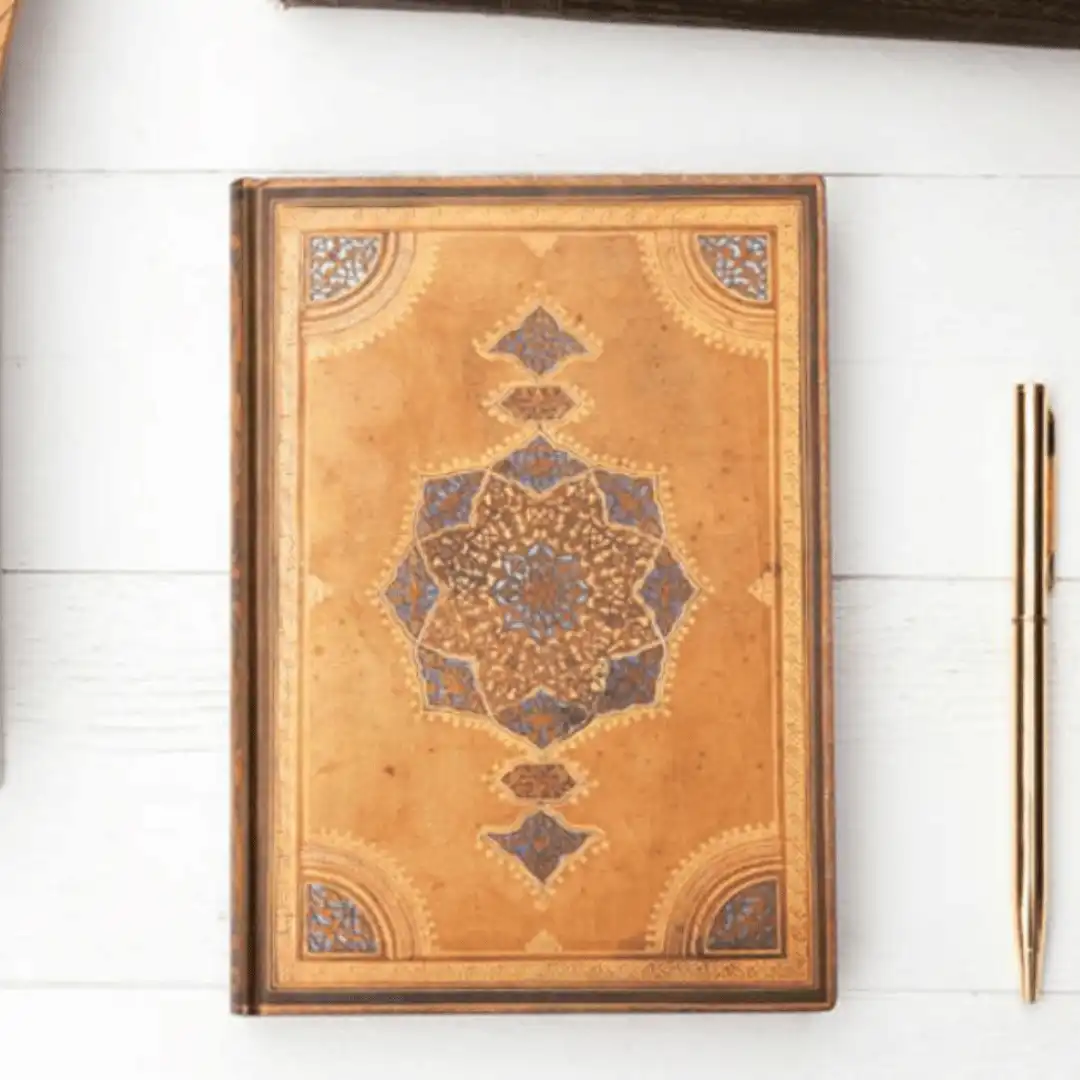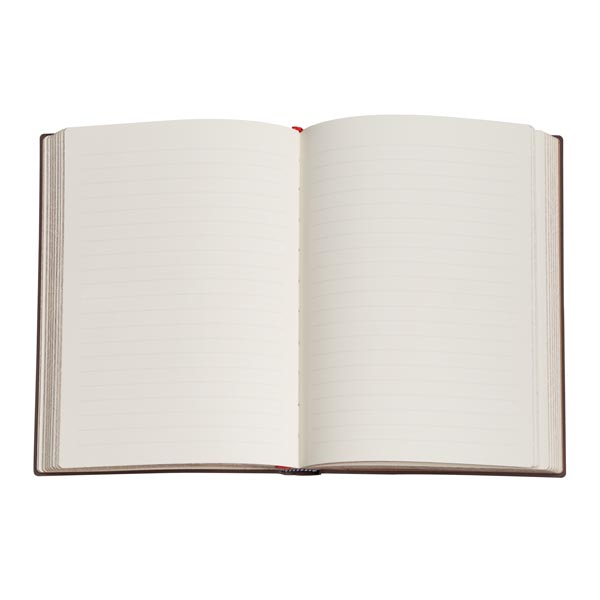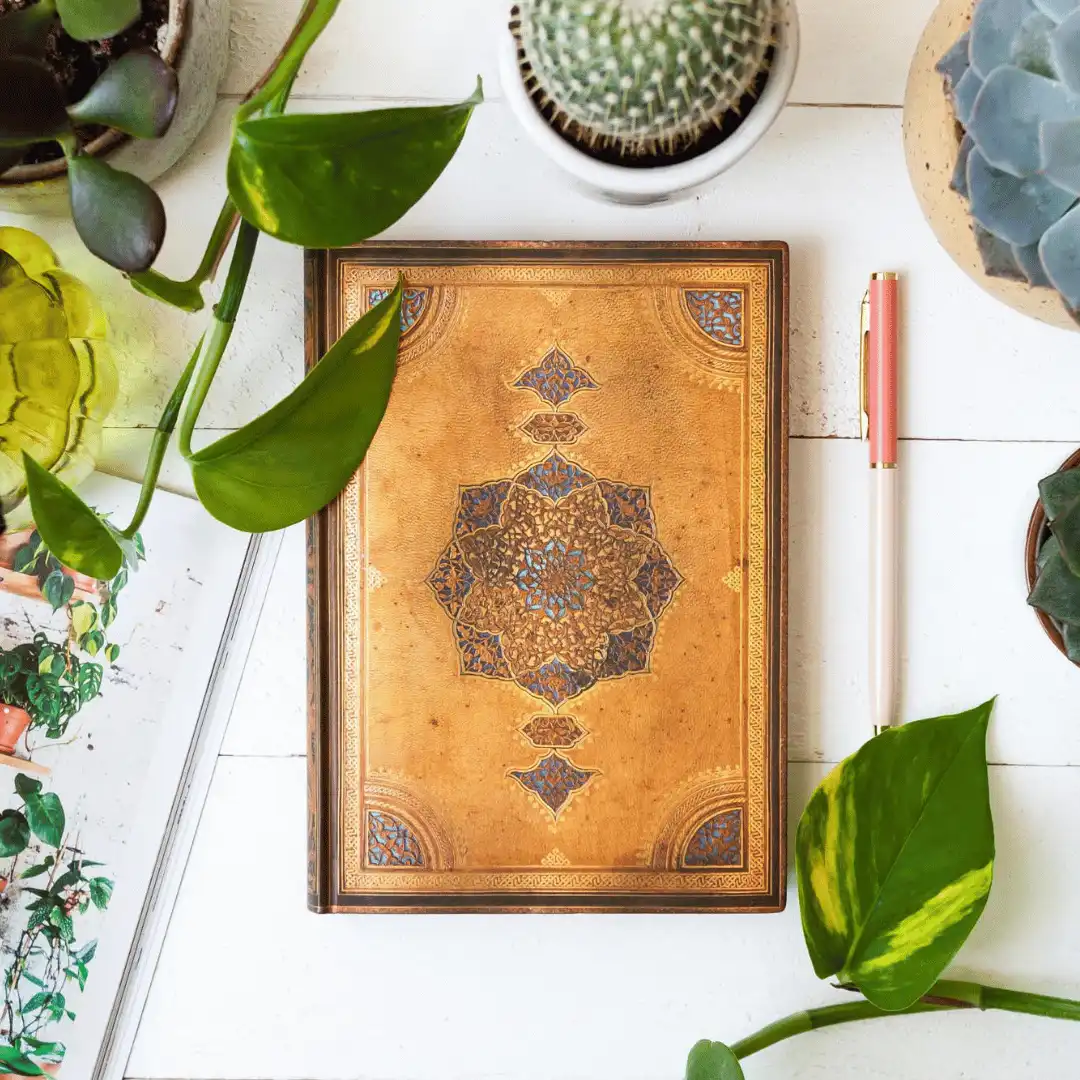Reviving Safavid Elegance: Blending Tradition with Modernity
Discover the Artistic Legacy of Safavid Bookbindings: Exploring the Intricate Designs and Cultural Significance of Persian Filigree Patterns
Our Safavid design portrays a leather filigree pattern incorporating handtooled motifs, retaining the elegance and style of the Islamic Golden Age even in our modern context.
Associated with this era of artistic excellence, Persian Safavid-style designs represented a high point in the art of the book. These bindings often feature centralized designs of medallions, quadrants, plant and animal motifs, pentagonal flap closures and elaborately decorated “doublures” (interior covers), along with exquisite creations in cut-out leather, coloured papers and gilding. Above all, symmetry is the hallmark of this style. The original binder of this particular design used reddish-brown goatskin, real gold, lacquer and paint to achieve balance in his creation.


Shah Abbas and the Enduring Legacy of the Safavid Dynasty
The Safavid Dynasty is often considered to represent the Islamic Golden Age, with its artists and creative methods still celebrated today. This Safavid-style design incorporates the symmetry, pentagonal flap closure and filigree designs that are the hallmarks of this binding tradition.
Dating back to the 17th century, this artwork comes from the rich handicraft tradition that Shah Abbas the Great, the Fifth Shah of the Safavid Dynasty, inspired during what has become known as the Islamic Golden Age of Art (750 through the 16th century). He recognized the commercial benefits of promoting the arts and, thus, the crafts of tilework, pottery and textiles thrived. Illuminated manuscripts also became a flourishing industry and great attention was brought to the craft of bookbinding and design.
Though the rule of the Safavids came to an end in 1736, they left a great and lasting legacy by reviving and establishing Persia as both an economic and artistic stronghold. Amid the many jewels of this ancient period and culture, decorative bookbinding shines particularly bright and Paperblanks are honoured to bring it back to everyday life in our Safavid series.
Details about the Safavid
Original Art: Filigree and lacquer book cover
Era: late 17th century
Region: Persia (Iran)
Brand: Paperblanks
Edge Printing: No
Binding Type: Smyth Sewn
Pouch Type: Memento Pouch
Interior Paper: Smooth










The Islamic Golden Age
During the Islamic Golden Age, spanning from the 8th to the 14th century, Islamic civilization experienced a flourishing period of cultural, scientific, and artistic advancement. It was characterized by remarkable achievements in various fields, including mathematics, astronomy, medicine, philosophy, and the arts. This era saw significant contributions from scholars, scientists, artists, and philosophers across the Islamic world, leading to groundbreaking discoveries and innovations that profoundly influenced subsequent civilizations.
About the Safavid Dynasty
The Safavid Dynasty, which emerged in Persia during the 16th century, coincided with the latter part of the Islamic Golden Age. Under the leadership of Shah Abbas the Great, the Safavids fostered a cultural renaissance and promoted the arts as a means of enhancing their prestige and power. They patronized artists, architects, and craftsmen, leading to the development of exquisite works of art, including intricate bookbindings adorned with filigree patterns. The Safavid era is renowned for its contributions to Persian art and culture, marking a significant chapter in the history of Islamic civilization.
About Paperblanks
Paperblanks believe in the power of creativity and the infinite possibilities that start with a blank page. When you connect with a Paperblanks design and the story behind it, you find a trusted space for your thoughts and imagination. Your journal becomes a companion along life’s journey, inspiring you to write, sketch, remember, and dream, as you chronicle what matters most.
